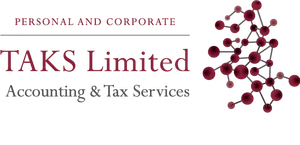Cost drivers and cost reduction strategies are essential elements in managing a successful and financially resilient business. By understanding the factors that contribute to your costs and implementing effective strategies, you can optimize operations, enhance profitability, and position your company for sustainable growth. Regularly assess your cost structure, monitor industry trends, and be willing to adapt your strategies to changing circumstances to stay competitive in today’s dynamic business environment.
Cost drivers are the underlying factors that influence the costs associated with producing goods or providing services. Identifying these drivers is crucial, as they provide insights into the components of your expenses and guide your cost reduction efforts. Cost drivers can vary widely across industries and businesses, but common examples include:
Labor Costs: The salaries, wages, and benefits paid to employees directly impact your costs. Productivity, overtime, and training expenses are also important considerations.
Raw Materials and Supplies: The cost of inputs required for production directly influences your overall expenses. Fluctuations in material prices or availability can impact costs significantly.
Energy and Utilities: Energy consumption, such as electricity, gas, and water, contributes to operational costs. Implementing energy-efficient practices can result in substantial savings.
Overhead Expenses: Indirect costs, such as rent, office supplies, insurance, and maintenance, can add up quickly and impact your bottom line.
Technology and Equipment: Costs associated with maintaining and upgrading technology, machinery, and equipment can be substantial, especially if they are outdated or require frequent repairs.
Effective Cost Reduction Strategies
Lean Practices: Adopt lean methodologies to eliminate waste and optimize processes. Streamline workflows, reduce unnecessary steps, and identify bottlenecks to enhance efficiency.
Supplier Negotiations: Negotiate favourable terms with suppliers to secure better pricing, bulk discounts, or extended payment terms. Regularly assess supplier relationships to ensure competitiveness.
Automation and Technology: Invest in technology solutions that automate tasks and processes. Automation can improve accuracy, reduce labour costs, and enhance productivity.
Energy Efficiency: Implement energy-saving initiatives such as energy-efficient lighting, equipment, and practices. Consider renewable energy sources for long-term cost savings.
Outsourcing: Evaluate non-core functions that could be outsourced to specialized providers. Outsourcing can reduce overhead and administrative costs.
Inventory Management: Optimize inventory levels to avoid overstocking or stockouts. Efficient inventory management minimizes storage costs and ensures resources are used efficiently.
Employee Training and Development: Investing in employee training improves skills and productivity, reducing errors and rework that can drive up costs.
Process Reengineering: Analyse and redesign workflows to eliminate redundant steps and enhance overall efficiency. Embrace digital solutions to simplify complex processes.
Budgeting and Forecasting: Create detailed budgets and regularly review actual expenses against projections. This helps identify areas where expenses are higher than expected.
Continuous Improvement: Establish a culture of continuous improvement within your organization. Encourage employees to contribute ideas for cost-saving measures and reward innovative solutions.
